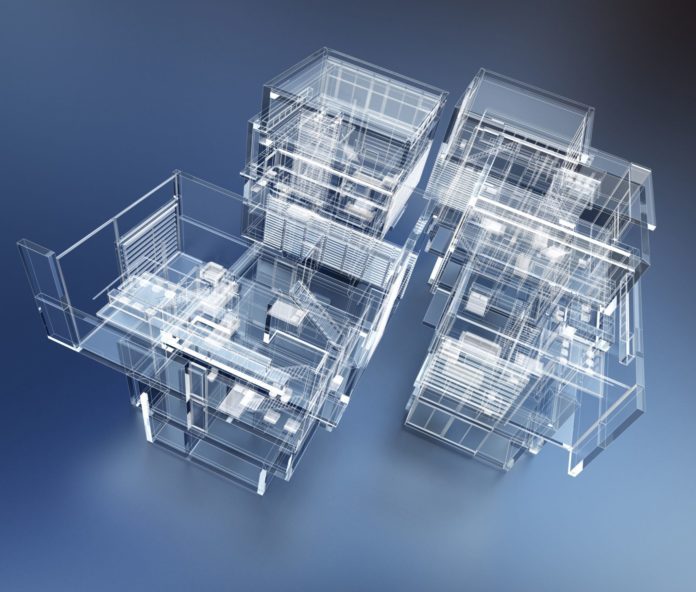We are in the middle of a climate crisis, and enterprises must take swift action to reassess their energy consumption and carbon emissions. Thirty-four percent of energy consumption in the U.S. is wasted, and something needs to be done.
How are businesses cutting emissions with smart building technology? Keep reading to learn how enterprises lead the charge towards a more sustainable future with smart building technology. This guide will show you how security can begin a more sustainable future for your business.
Smart building technology is a powerful tool that is helping businesses to reduce their monthly overhead costs and take steps toward a more sustainable future. Let’s look at the exciting technologies that are bringing enterprises forward!
Improving security and management of occupancy levels
Consumers use 77% fewer servers and reduce carbon emissions from their offices by 88% when using the cloud. If your security system is on-premise, many servers will occupy space in your office.
However, with a cloud-based system, you have fewer servers to manage – this means fewer visits to the site from engineers to fix and update your servers, saving petrol and reducing carbon emissions. A cloud-based system also has fewer servers to provide electricity for.
So, many businesses are opting for cloud-based security technologies to maximize the space in their offices and reduce maintenance costs and energy consumption. What are the most popular cloud-based security solutions?
Access control
Using cloud-based access control solutions with door intercom systems reduce the number of servers you need to manage in your office space while providing a convenient yet secure way to verify guest and employee identity when they enter a door. It also eliminates the need for keycards and fobs, which you must replace frequently. By eliminating the use of keycards and fobs, you can reduce waste and unnecessary expenses for your company.
Instead of keycards and fobs, touchless access control uses mobile credentials for opening and unlocking doors. Using mobile credentials, touchless access control offers more convenience to the user. The user does not need to withdraw their mobile device and scan it, as they would with a keycard or fob. Instead, they must simply wave their hand over the access reader. Their hand movement will trigger remote communication using three methods (WiFi, Bluetooth, cellular) to ensure entry on the first attempt.
Since touchless access control is cloud-based, you can perform updates and troubleshooting over the air. Usually, an engineer would need to visit the site and manually perform updates and troubleshooting with an on-premise system. With touchless access control, there is no need for travel to the site – eliminating carbon emissions caused by this travel.
Integrations for a more streamlined system
Cloud-based security solutions present the opportunity for security teams to implement integrations that can enhance the function of your security system to perform energy-saving functions. Here are some of the best integrations for a security system to save energy:
- Building sensors – building sensors placed around your building perform several functions. They let you know when someone enters the space, and they can perform security alert functions, too. Integrating building sensors with your access control system gives you an idea of the level of traffic in your building.
- Occupancy management software – if you implement occupancy management software, you gain insight into the occupancy levels in your building. You can use the software to view peaks, troughs and patterns in occupancy levels. This insight will give you some understanding of which times of day you will need to heat, light and provide power to areas within your building.
Space optimization and utilization
To ensure you are using energy effectively in your building, you need to optimize your space and utilize integrated IoT and occupancy management tools. When building sensors and access control dictate that no users are in a room, your IoT devices will switch off automatically to conserve energy. Similarly, they will come back to life and switch on as soon as a user enters the space.
To establish this system, you must establish building management triggers based on access control events. Some of the best devices and systems to include in your smart building management include:
- HVAC systems – when a space is unoccupied, there is no need to waste valuable energy and money ensuring that the area is comfortable for users. You can connect your HVAC systems to the internet of things and establish building management triggers for when your HVAC systems should be on or off.
- Lighting – similarly, if a space is empty, there is no need to provide lighting. So, connecting your lighting to IoT will help you save on unnecessary lighting costs.
- Devices – any display monitors, computers and appliances in your building should be switched off when the room is empty.
Summary
If you’re looking for better ways to use energy within your enterprise — look at security. You can waste valuable time, energy and money maintaining an on-premise system. Investing in a cloud-based system can reduce energy consumption and reduce expenses. You can also leverage a cloud-based system to automate building management triggers based on access control events to conserve energy and reduce costs.

